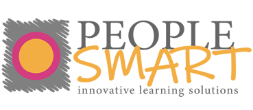Since the onset of the COVID crisis, there has been a very lively and rich discussion around what this all means for leadership under the extreme conditions we have been going through. What follows is a very personal contribution, based on my initial training as a social historian and 37 years of experience in the Learning and Development space.
Even with the tremendous advances in Artificial Intelligence and Machine Learning, human beings (and by extension, leaders) will continue to play a critical role in the success of organizations. But this raises a new series of questions: who we recruit, who we promote, who we decide to invest in for L&D spend, how we recognize and reward. There are a few leadership models out there with 6 dimensions and perhaps the TALENT “proto-model” proposed below could make a small contribution to how we can collectively consider updating our pre-existing models on leadership for the COVID Era.
Trust

It goes without saying that trust “makes the world go round”. It is the bedrock, cornerstone and foundation of everything we do in both our professional and personal lives. We can think of Leoncini’s well-known 5-tiered pyramid around Team Performance, with trust being the foundation of everything. Beyond the leader-contributor relationship, trust is clearly key in all stakeholder ecosystems (shareholders, suppliers, customers, NGOs…). While trust is certainly universal, there are a couple of important intercultural distinctions: cognitive trust and affective trust. This difference has been very clearly explained in INSEAD Professor Erin Meyer’s very readable synthesis of intercultural theory. According to Meyer, “cognitive trust is based on the confidence you feel in another person’s accomplishments, skills and reliability” (on the extreme end of the scale, we can find Anglo-Saxon cultures). “Affective trust, on the other hand, arises from feelings of emotional closeness, empathy, or friendship” (Latin American, Middle East cultures, for example). My hunch is that affective trust – even in predominantly cognitive trust countries – will become increasingly important for team leaders when a majority of interactions may be done remotely.
In the current situation, I think it is useful to go back to Covey’s well-known trust equation, where Trustworthiness equals (on the numerator side) Credibility + Reliability + Intimacy, with Self-Orientation on the denominator side. To simplify, leaders who are perceived by team members and other stakeholders as being driven more by the “collective interest” (and the development and the performance of the team) than in pursuing a personal agenda will tend to engender a higher level of trust. In view of this, those leaders with “toxic” leadership behaviours will be even more dangerous for organizations (with a negative leverage effect on employee engagement). Stanford professor Bob Sutton wrote a visionary and deliberately provocative book on this in 2007 – The No Asshole Rule. Even a small minority of bad apples can have a very damaging impact on an organization’s level of engagement. We can also remind ourselves of the well-proven adage: most people quit because of their boss. This is the moment for leaders to take the courage to eject the “toxic leaders” from their organizations. These toxic leaders not only have a very negative impact on the engagement levels of their teams but on those they are trying to influence in their respective corporate eco-systems with what we could in fact call their “fake leadership”.

It is my gut and far from the original feeling that trust will become even more critical in the COVID Era. With the emerging hybrid model of working, travel restrictions and severely reduced face-to-face “quality time” in meetings, seminars, conventions, etc., leaders need to give even more explicit attention to this. Gallup has done some very interesting research in this domain, with a particular focus on employee engagement. This is the first time Gallup has observed macro-factors (in this case COVID-19 and the BLM protests) having a strong influence on employee engagement levels, in strong contrast to SARS, the Avian Flu and even the Great Recession of 2008. In terms of remote working, those with the highest level of engagement work remotely 40-60% per cent of the time. On the extremes (0% or 100%), engagement levels fall dramatically. Another very interesting finding is that “having meaningful feedback on a weekly basis, and not just frequently allows maximum engagement for all degrees of remote working”. But in actual fact, there is a massive gap in terms of employees’ perceptions: only 2 in 10 strongly agree that their managers are providing meaningful feedback and only 3 in 10 state that their managers are good at helping them set work priorities”.
It is clear from this that leaders need to put a much greater emphasis on giving impactful feedback which has been carefully prepared and takes into account Emotional Intelligence which will be discussed in the EMOTION dimension. Multi-dimensional feedback – between the manager and the team member and vice versa as well as among team members- has become ever more critical. Perhaps managers need to ask their reports more frequently: “how am I doing?”, “as your team leader, how can I more effectively enable you and the team to perform and grow?”, etc. This will require both managerial and employee courage to share frankly, openly and transparently on the key issues. We could perhaps learn from our Dutch colleagues who place such an important value on these “real conversations”. We also need to get team members to feel comfortable giving themselves feedback in the most constructive and trust-boosting manner. For a lot of organizations, instilling and/or reinforcing such practices will inevitably necessitate important cultural shifts (with a need for C-Suite sponsorship and exemplarity).
From an intercultural point of view, perhaps we should all strive to be relatively more “low context” than “high context” in terms of how we communicate. These concepts came out of the pioneering work of a couple of Social Anthropologists, Edward T. Hall and Mildred Reed Hall, who transferred their research on Native American tribes to looking at business practices around the globe. Low context communication is relatively more explicit (“the mass of information is vested in the specific code”) whereas in high context communication “most of the information is in the person, while very little is in the coded, explicit, transmitted part of the message”. [6] As a lot of the research has shown over the past decades, clarity – in terms of such things as vision and purpose, what is expected of me, how I am recognized and rewarded is fundamental in achieving higher levels of employee engagement and team performance. During a very interesting meeting with Virgin Australia a couple of years ago, the HR Director outlined their approach to employee empowerment: “freedom within a framework” (seeking an appropriate balance between giving employees maximum leeway and very clear guidelines in terms of overall expectations). In the current stressful working environments, leaders will need to be all too aware that giving more freedom can also lead to greater employee uncertainty and stress. To put it simply, things need to be really clear, well-prepared and above all explicit.
In my view, one of the keys to maintaining and enhancing trust will depend on more impactful performance management. If we agree that there is a clear causal link between leadership behaviours and business performance, have we gone far enough in ensuring that our performance management systems are up to the challenge? With the rapid acceleration of hybrid working – and the consequence of a greater need for effective delegation and empowerment – leaders will need to deal with team members who are under-performing or poorly-performing (as well as recognize and reward those who enhance trust amongst team members).
Finally, in our digitally-challenged environments, one of the most critical responsibilities of leaders is to ensure that their teams comply strictly with cyber-security protocols. With the new hybrid way of working, there has been a blurring between the private and public spheres. Leaders need to ensure that their teams make a clear distinction between their professional and personal devices. Over the years, I have often militated for embedding “Finance for Dummies” in senior leadership programs (e.g., within my zone of responsibility, what can I do to improve my company’s cash situation?). In the same fashion, leaders will need to be increasingly cyber-aware to lead their teams effectively and protect their respective organizations.
Food for thought:
How can I maintain and improve trust as a leader in this new hybrid working environment?
How can I get feedback on the level of trust I am creating?
How can I best share my “trust learning curve” with peers?






